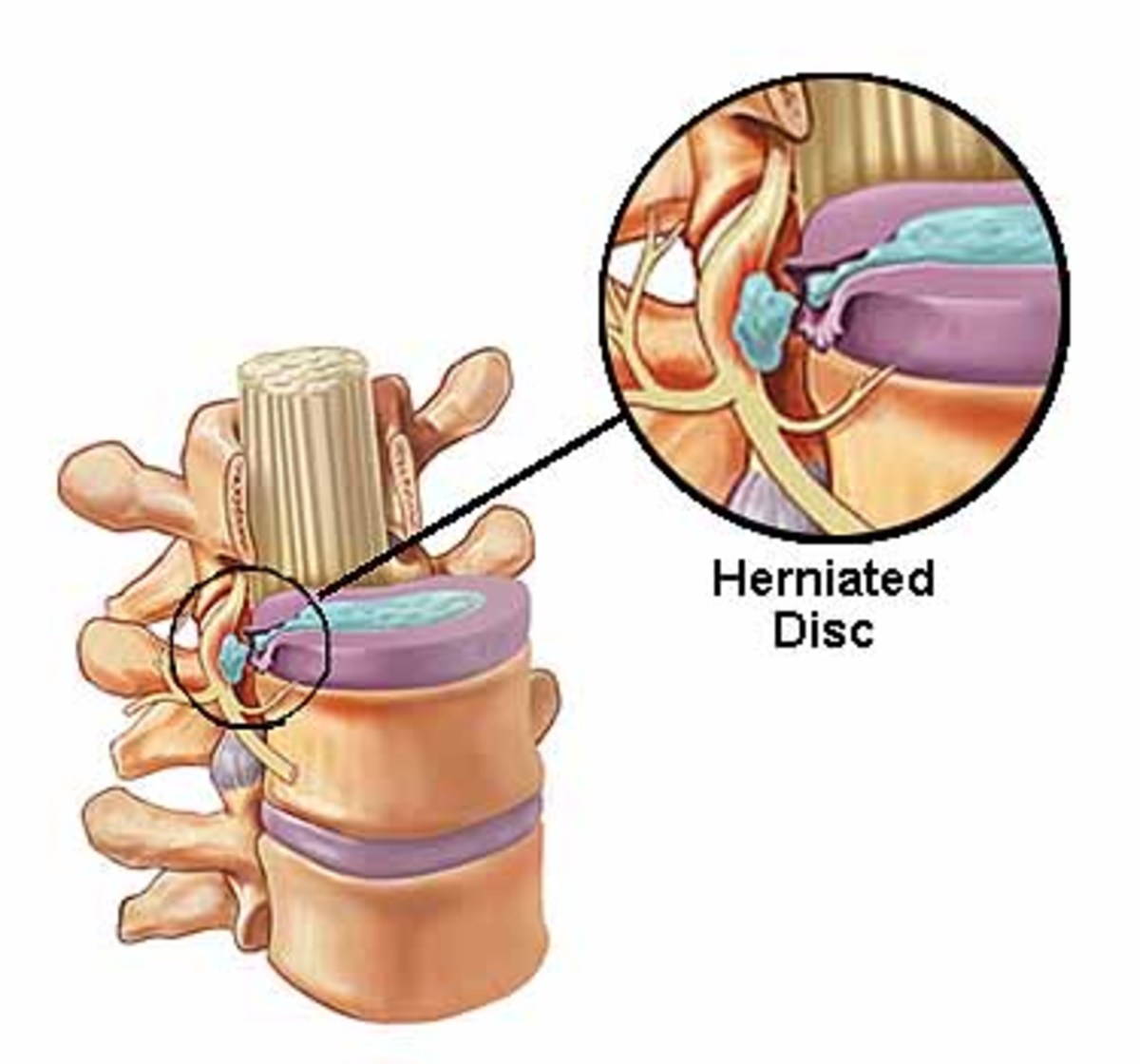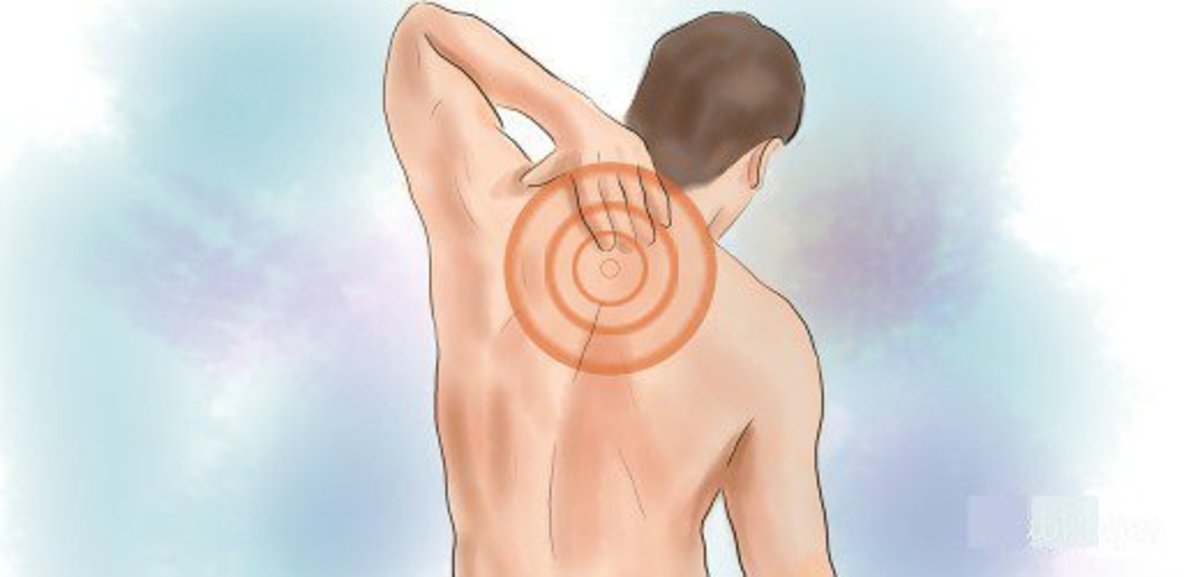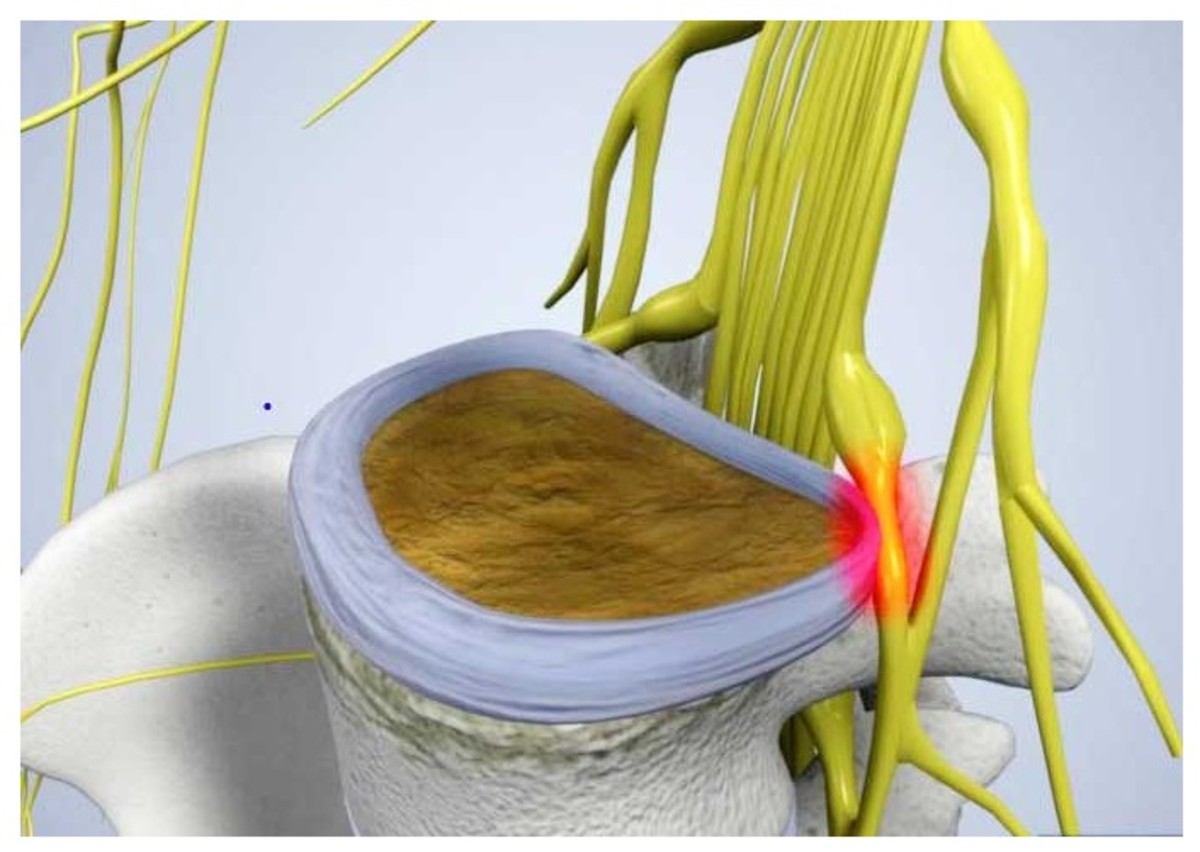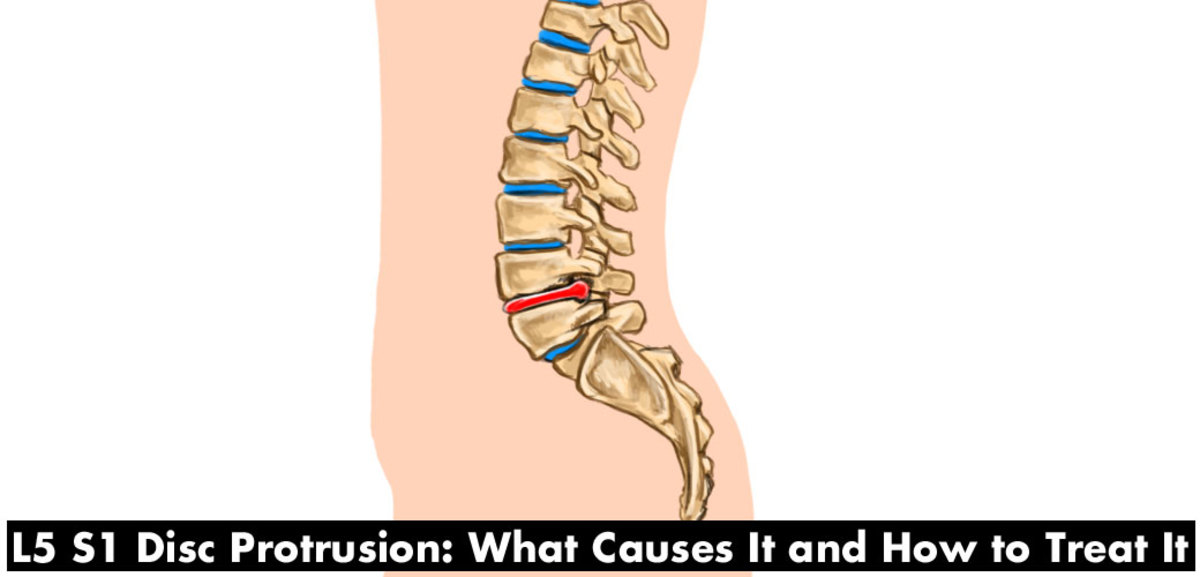Herniated Disc Treatment -- Causes, Symptoms, and Treatments for a Herniated Disc
If you suffer from back pain, sharp-shooting pains down the legs, or
weakness of your leg muscles, then it's possible that you may have a
herniated disc. Also known as a "ruptured" or "slipped" disc, a
herniated disc is a common back condition that causes irritation to the
spinal nerves and displays symptoms back and leg pain. Having a
slipped disc can be very painful and leave you feeling powerless.
Fortunately, there are a number of herniated disc treatment options available that can help give you much needed relief.
The Basics of a Herniated Disc- Anatomy, Causes, and Symptoms
Before finding a treatment for herniated disc, you should have a
basic understanding of what it is and how it happens. Your spine is
made up of bones known as vertebrae, which are cushioned by spinal
discs. Spinal discs are soft and made up of cartilage which assists
with movement of the spine and shock absorption. Sometimes, this soft
disc becomes more rigid with age and loses elasticity, leaving it
vulnerable to injury and damage. When the disc becomes rigid, it can
rupture, and a portion of the disc bulges out from between the
vertebrae. As serious as this may sound, the actual bulging is not the
cause of pain. The problem occurs when the bulged disc compresses or
pinches the spinal cord and spinal nerves.
A herniated disc may
occur in any part of the spine, but it is most common in the lower back
(lumbar spine). However, there are also cases of slipped discs in the
neck (cervical) and upper back (thoracic regions) as well.
Herniated disc causes may include:
- A fall or accident that injures the spine
- Repetitive straining if the spine
- Wear and tear of a disc due to aging
- Excess weight
- Uneven pressure on the disc due to muscle imbalances.
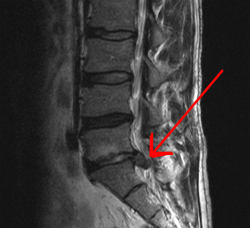
What are the symptoms?
When
a bulging disc compresses the nerve root, it may produce symptoms
including pain, numbness, tingling, and weakness in the area in which
the nerve travels. If compression occurs in the lower back, it can
cause sciatica, which gives the sensation of numbness and pain in the
buttocks and down the leg. If a disc is not pressing on a nerve, there
may be no pain at all. A more serious symptom that may occur is known
a cauda equina syndrome which is the squeezing of the bundle of nerve
roots residing at the end of the spine. This is a serious condition
that is marked by numbness or weakness in both legs, and loss of bowel
and bladder control. If you suspect that you may have cauda equina
syndrome, seek medical advice immediately.
Herniated Disc Treatment Options
In short, there are two types of herniated disc treatments
available, non-surgical and surgical. Most slipped discs cases can be
treated without surgery by simple lifestyle modifications. This may
include:
1. Using hot or cold compresses. For an acute injury,
cold packs or ice can be placed around the area to immediately relieve
pain and inflammation. After a few days, you can apply a warm compress
to the area for comfort and relief.
2.
Modifying your movements and everyday activities. If you have severe
lumbar pain, avoid activities that aggravate symptoms, such as bending,
lifting and twisting the spine, reaching improperly, using exercise
machines, and sitting for extended periods of time. Exercise is still
important to regain your spine's strength and flexibility, but your
physical activity should be light and according to your physician's
instructions.
3. Physical therapy treatment of herniated
Disc. A physical therapist can show you exercises and positions to
help minimize herniated disc pain. A therapist may also help you to
maximize your stability and improve core strength to avoid future injury.
4.
Massage Therapy . Structural massage therapy can be an effective
lumbar herniated disc treatment, which helps soften the muscles around
the spine that may be causing further impingement of the nerves.
5.
Pain medications. Mild to moderate pain can usually be treated with
over-the-counter medications such as ibuprofen, aspirin, acetaminophen
or naproxen. If you're experiencing spasms, your doctor may prescribe
muscle relaxants. If none of these medications work, your doctor may
also prescribe narcotics for a short period of time. Alternatively, a
doctor may also give you nerve pain pills or corticosteroid injections
directly into the spine.
In most cases a herniated disc will
heal on its own over time. About half of people with a herniated disc
get better within 1 month, and most are better within 6 months.
However, roughly 10% of people with a ruptured disc will need surgery
at some point. A surgical herniated disc treatment may work for your if:
- your symptoms fail to improve after six weeks of non-surgical treatments
- you have trouble walking or standing
- a disc fragment lodges in your spinal canal, pressing on a nerve.
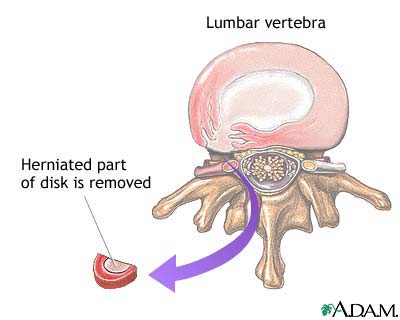
The
most common surgical procedure for a herniated disc is a
microdiskectomy. A microdiskectomy may be standard, or open, surgery
where some the vertebrae are cut away to get to the herniated discs and
compressed nerves. During this type of surgery:
- the patient is placed under general anesthesia, or in some instances, localized anesthesia by numbing the back with injections
- small amounts of bone and ligaments are cut and removed to get access to the herniated disc
- small surgical instruments are used to relieve pressure on the nerve by removing the herniated part of the disc and other fragments
- incision is then closed with staples or stitches.
With this type of surgery, most people make a quick recovery and resume normal activities within 2-6 weeks.
There
are less invasive approaches to surgery as well. These techniques use
small instruments and the surgeon does little to no cutting of the
spine. These techniques include:
- Percutaneous Treatment Options
- Chemonucleolysis
- Percutaneous Nucleotomy
- Endoscopic Discectomy
- MED
All of the methods above are for both lumbar and cervical herniated disc treatments.
Other Helpful Hubs By This Author
Stenosis of the Spine--The Basics of Spinal Stenosis
Cervical Spine Surgery--What to Expect During and After a Cervical Spine Procedure
Spinal Stenosis Treatment--The Different Methods of Treating Spinal Stenosis
Artificial Disc Replacement --Revolutionary Technology for Degenerative Disc Disease
Bulging Disc Treatment -- Bulging Disc Causes, Symptoms, and Treatment Options
Sciatic Nerve Treatment--Treating Sciatica and Piriformis Syndrome

